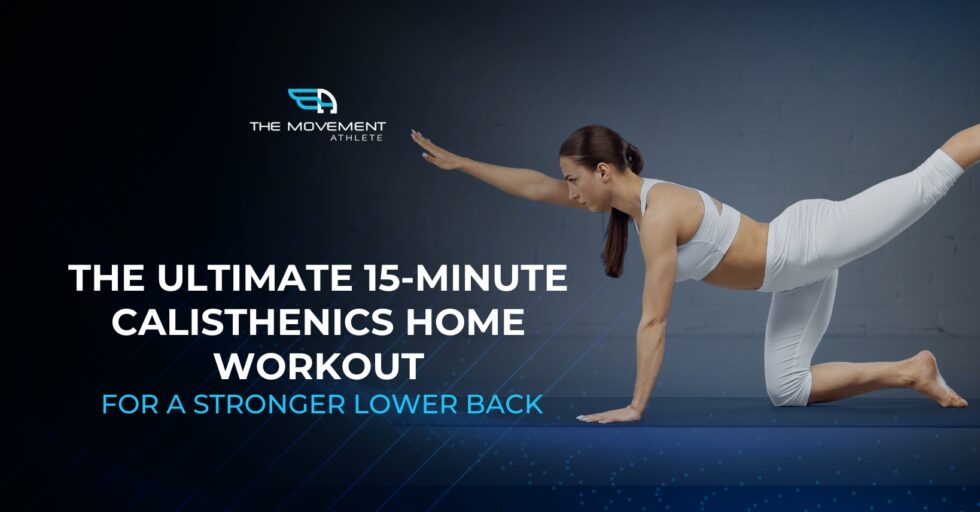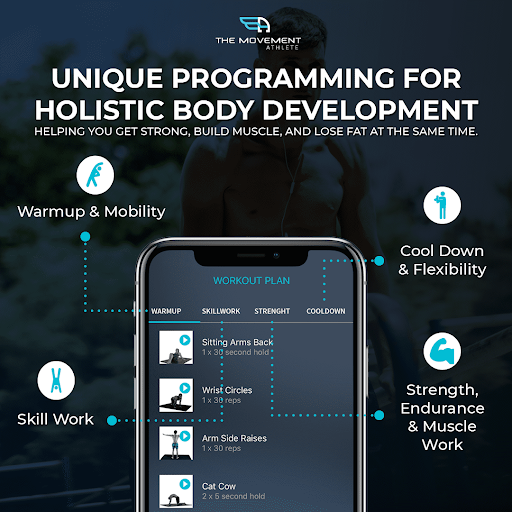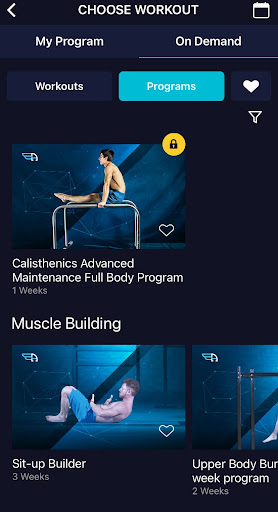
Have you ever felt that nagging ache in your lower back after a long day at your desk or maybe from bending over your garden? You’re not alone, and guess what? You can wave goodbye to that discomfort in 15 minutes a day, with no gym membership required.
We’ve put together a straightforward calisthenics workout that fits even the busiest days, perfect for strengthening your lower back. Whether you’re busy at work, taking care of kids, or just dealing with everyday life, this routine is a quick way to help ease lower back pain, improve your core strength, and improve your posture.
The best part? You can do these exercises anywhere—at home, in the park, you name it. This is exactly what the Movement Athlete emphasizes: the flexibility and accessibility of effective workouts that require minimal to no equipment, making fitness achievable for everyone, regardless of their lifestyle or location.
This article covers the following:
- Creating an effective lower body workout
- Exercises that strengthen lower back
- Example of a 15-minute home calisthenics workout for lower back
How Do You Create an Effective Lower Body Workout?
The Movement Athlete app (TMA) approach to calisthenics training is comprehensive and uniquely structured to cater to the holistic development of an athlete. Here’s how this app creates an effective lower body workout:
1. Warmup + Mobility
This initial phase is crucial for preparing the lower body for the workout ahead. Mobility exercises enhance the range of motion and flexibility, which is essential for performing complex movements safely and effectively. For the lower body, this includes dynamic stretches and light exercises that target the hips, knees, and ankles.
2. Skill Work
Skill work is about technique and precision, which might involve exercises like pistol squats or advanced lunge variations in the context of the lower body. These exercises focus on balance and fine-tuning body alignment, which is vital for executing more complex movements.
3. Strength Work
Strength work forms the core of the workout, involving exercises that build the foundational strength needed for calisthenics. For the lower body, this could include variations of squats, deadlifts, and leg presses that are structured to increase strength progressively.
4. Muscle Building Work
Muscle work aims to increase muscle mass and support the joints. This includes performing exercises at lower intensities but higher volumes. Examples for the lower body might be high-rep sets of leg curls and extensions designed to maximize muscle growth and endurance without overloading the joints.
5. Endurance Work
In lower body workouts, endurance might be targeted through longer holds or sustained exercises like wall sits or static squats. This phase helps increase the time muscles can sustain activity, which is crucial for longer calisthenic routines.
6. Cooldown + Flexibility Work
Finally, the cooldown phase helps in recovery and flexibility. This might include deep stretching and light movements that alleviate muscle tightness and promote muscle recovery, focusing on the lower body areas worked out during the session.
By integrating these elements, TMA ensures that each workout addresses all aspects of fitness — mobility, skill, strength, muscle development, and endurance. This structure enhances the workout’s effectiveness and ensures a balanced development that supports complex calisthenic movements, making it a superior choice for athletes who aim for comprehensive physical development.

How to Create the Most Effective Lower Back Workout for Your Level?
To create an effective calisthenics routine focused on strengthening your lower back, follow these steps:
1. Assessment: Begin by evaluating your strength progression. Identify exercises within the strength progression that you can perform comfortably at mastery. This sets the foundation for building a workout tailored to your current capabilities.
2. Exercise Selection: Pair the selected strength exercises with complementary skill, muscle, and endurance exercises. These should align with your assessed level and are crucial for helping you progress to the next fitness level.
3. Workout Structuring: Organize these exercises into a structured workout. The structure of your workout will vary based on your current stage—whether you’re a beginner, at an intermediate level, or advanced. This tailored approach ensures that you work at the appropriate intensity to strengthen your lower back effectively.
Consider these steps as a blueprint for building a lower back workout that grows with your fitness level, ensuring continuous improvement and strength gains.
Calisthenics Exercises that Strengthen the Lower Back
First, let us review lower back strengthening exercises before our 15-minute workout. Calisthenics exercises utilize body weight to strengthen various muscle groups, including the lower back. These exercises are advantageous for improving posture, enhancing athletic performance, and reducing the risk of injuries.
Key calisthenics exercises for strengthening the lower back include:
- Bridge
This exercise primarily targets the lower back, glutes, and hamstrings. It involves lying on your back with your feet flat on the ground and your knees bent. By lifting the hips towards the ceiling, the bridge strengthens the lower back and improves hip mobility and core stability.
- Superman
Perfect for focusing on the lower back muscles, the Superman exercise enhances spinal health and posture. To perform this, lie face down on the floor with arms and legs extended. Raise both arms and legs simultaneously, creating a slight arch in your back, and hold this position to engage the lower back muscles effectively.
- Plank
A fundamental core-strengthening exercise, the plank also engages the lower back. Supporting your body on your forearms and toes, maintain a straight line from head to heels. This static hold builds core and lower back stability, which is essential for overall body strength.
- Reverse Hyperextensions
This exercise strengthens the lower back by using the back muscles to lift the legs. Typically performed on a bench or table, you lie face down and use your lower back muscles to elevate your legs against gravity, which also benefits the glutes and hamstrings.
- Back Extensions
Conducted on a Roman chair or a hyperextension bench, this exercise isolates the lower back muscles. By securing the feet and bending forward from the waist, then lifting the torso back up, back extensions strengthen the spinal erectors—a crucial group for back health.
- Bird Dog
This exercise improves balance and lower back strength by extending opposite arms and legs while maintaining a neutral spine. Kneeling on all fours, extend one arm forward while stretching the opposite leg back, hold, then switch sides. This movement also enhances core stability and coordination.
- Hip Hinge
Essential for teaching proper movement mechanics, the hip hinge exercise strengthens the lower back and improves flexibility. Stand with feet hip-width apart and slightly bend the knees; hinge at the hips to lower the upper body forward while keeping the back straight, then return to standing. This exercise strengthens the lower back and prepares you for more complex lifting movements.
Each of these exercises not only strengthens the lower back but also plays a significant role in improving overall physical fitness, stability, and injury prevention.
Check out the Movement Athlete app, as it offers a comprehensive “Back Fundamentals” program that encompasses a holistic approach to strengthening the lower back, considering various aspects of physical fitness. Through this multifaceted approach, the “Back Fundamentals” program in the Movement Athlete app provides users a structured and guided pathway to achieve a stronger, more flexible, and more resilient lower back.
15-Minute Home Calisthenics Workout for Lower Back
Now, let us start with our 15-minute home workout.
A stronger lower back is pivotal for overall physical health and enhancing performance in many sports and daily activities.
The key to building strength in this area lies in consistency, proper form, and incorporating various exercises targeting the lower back muscles and supporting muscle groups. Here’s a quick and effective home workout designed to strengthen your lower back, which can be done with minimal equipment:
Warm-Up
- Duration: 3 minutes
- Activities: Begin with 1 minute of light jogging to get the heart rate up. Follow this with 2 minutes of dynamic stretching, focusing on leg swings, arm circles, and gentle torso twists to warm up and mobilize the major muscle groups quickly.
Main Workout
- Duration: Do this in 10-11 minutes
- Exercises: Bird dog, bridge, superman, side plank, and dead bug.
Bird Dog
- Repetitions: 10 per side
- Instructions: Start on your hands and knees, with your knees under your hips and your hands under your shoulders. Extend one arm and the opposite leg, keeping your body stable. Hold briefly, then switch sides. Aim for controlled movements to engage the core.
Bridge
- Repetitions: 12
- Instructions: Lie on your back with your knees bent. Press through heels to lift hips, forming a straight line from knees to shoulders. Hold the top position briefly before returning down. This exercise strengthens the glutes and lower back.
Superman
- Repetitions: 12
- Instructions: Lie face down, arms and legs extended. Lift arms, chest, and legs off the ground, holding briefly at the top. This exercise targets the back, glutes, and shoulders.
Side Plank
- Duration: 20 seconds per side
- Instructions: Lie on one side with legs straight. Prop yourself up on your forearm, lifting your hips to form a straight line. Hold, then switch sides. Focus on engaging the obliques and stabilizing the core.
Dead Bug
- Repetitions: 10 per side
- Instructions: Lie on your back, arms and legs raised. Lower the opposite arm and leg towards the floor without touching it, then switch. Keep your core engaged and back flat against the ground.
Cool Down
Duration: 2 minutes
Activities: Focus on quick, effective stretches. Perform the child’s pose, cat-cow stretch, and knee-to-chest stretch, holding each for about 20 seconds to help relax and stretch the muscles worked during the session.
Tips for Success
- Focus on Form: Proper technique is crucial to prevent injury and ensure the effectiveness of each exercise.
- Consistency is Key: Aim to perform this workout 2-3 times weekly, allowing adequate rest between sessions.
- Proper Breathing: Coordinate your breath with your movements—inhale during the less intense phase of an exercise and exhale during the effort phase. Proper breathing helps to oxygenate your muscles, maintain energy levels, and increase the effectiveness of your workout.
- Listen to Your Body: If an exercise causes pain (beyond normal muscle fatigue), modify or skip it.
This home workout is a simple way to strengthen your lower back, improve your balance, and get fitter—all from home, without a gym or special gear. It uses basic exercises that work for your main muscle groups, giving you a well-rounded fitness routine. Plus, you can change it up to fit your own fitness goals.
Start your fitness journey today by taking a 5-minute assessment to receive your detailed training plan. After completing the assessment, you’ll gain immediate access to a customized training regimen with expert recommendations and actionable workouts tailored just for you.
The Movement Athlete offers on-demand programs that cater to various fitness levels and goals, offering flexibility for users to train at their own pace and schedule. This feature suits beginners and advanced athletes, allowing for personalized and convenient progression.

🧐Frequently Asked Questions
🔎 Can I really strengthen my lower back with calisthenics at home?
Yes, calisthenics exercises utilize your body weight to build strength, making them effective for strengthening your lower back at home without needing equipment.
🔎 How often should I do a calisthenics workout for my lower back?
For optimal results, aim to incorporate lower back calisthenics exercises into your routine 2-3 times per week, allowing rest days in between for recovery
🔎 What are some simple calisthenics exercises to start with for lower back strength?
Begin with exercises like bird dogs, bridges, and supermans. These target your lower back and are great for beginners.
🔎 Do I need any special equipment for a calisthenics lower back workout?
No, the beauty of calisthenics is that it requires no special equipment. Your body weight and some open space are all you need.
🔎 Can calisthenics help with lower back pain?
When done properly, calisthenics can strengthen lower back muscles, reduce pain, and improve posture. If you have back problems, see a doctor.
Conclusion
The ultimate 15-minute calisthenics home workout offers a practical and efficient way to strengthen the lower back, alleviate discomfort, and enhance overall physical well-being.
Designed for individuals with busy schedules or limited access to gym facilities, this workout emphasizes the accessibility and effectiveness of calisthenics exercises.
You can engage and strengthen key muscle groups by incorporating movements like the bird dog, bridge, and superman, improving posture, core strength, and resilience against injuries. The Movement Athlete app supports this journey by providing a structured “Back Fundamentals” program, ensuring a comprehensive approach to lower back health. Remember, success lies in consistency, proper form, and listening to your body’s needs.